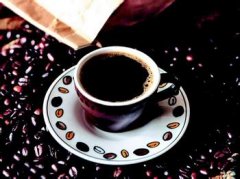Basic knowledge of coffee single boutique coffee

Coffee item 1: also talk about Blue Mountain
After reading some of my friends' posts, I found that everyone admires Blue Mountain. To be honest, I don't like Blue Mountain, but Blue Mountain is indeed a very characteristic kind of coffee, I have to say. I will tell you what I know about the Blue Mountain, which can be regarded as a supplement to the Blue Mountain paste in the coffee bar.
"Blue Mountain" was once the protagonist of coffee mythology, "rich aroma, complete texture, perfect combination with palatable acidity", which was once the evaluation of Blue Mountain by senior connoisseurs. Blue Mountain Coffee originates from the Wallenford Coffee Park in the Blue Mountains of Jamaica. Of all the blue mountain coffee beans sold in Jamaica, only those labeled Blue Mountain Wallenford are authentic blue mountain beans.
I personally think that the other Blue Mountain Coffee that can be seen in small linen bags and sold for 7800 yuan and a half pound is not a real Blue Mountain. The coffee beans marked with the Blue Mountain logo produced in other coffee farms are all grown in the Blue Mountains above 1000 meters above sea level, and the tree species and planting and raw bean handling procedures on the manor meet the standards of the Jamaican government, so they can obtain government permission to use the Blue Mountain trademark. As for the quality of these coffee beans marked Blue Mountain? If you have a chance, you can try it. I think it's a bit of an exaggeration. Because in the 1970s and 1980s, major coffee producing countries in Latin America, under the leadership of their local governments, carried out a large-scale improvement of coffee species (improvement, getting colder and cooler!-- the lines of the play "Teahouse"), although the output has been greatly increased, but the flavor of coffee beans has also changed greatly, and the characteristics of the legendary Blue Mountain Coffee can only be found in memories.
Coffee beans grown less than 1000 meters on the island of Jamaica are labeled as Jamaica High Mountain (Jamaican mountains) of mediocre quality and mild texture and sour taste.
As for Blue Mountain Blend (Integrated Blue Mountain) or Blue Mountain Style (Blue Mountain flavor), it is usually a combination of better Colombian base, intended to imitate the taste of Blue Mountain (technical term: infinitely close), which has nothing to do with Jamaica.
By the way, if someone buys an authentic Blue Mountain Wallenford, be sure to use a pressure pot to make it. All other brewing methods are not suitable for such precious coffee beans (although it doesn't taste like it is now, but the price is still frighteningly high).
Coffee item 2: interesting beans
Among the many coffee products, there are some coffee beans with great character. Here we find two beans made in Brazil and introduce them to you:
Number one (I change when I grow up!): Santos (Santos)
Santos, which grows in the area of S ã o Paulo and is named as the export port of Santos, is an Arabica tree introduced by Island of Bourbon (Bubon Island: present-day French island of Reunion, located in the Indian Ocean east of Madagascar) in the 18th century and belongs to Var.Bourbon (Bubon subspecies). Before the age of three to four, Bubon Coffee trees bear small, twisted beans called Bourbon Santos, the most advanced Brazilian beans. Once the coffee tree reaches the age of three to four years old, it will only produce large, flat beans called Flat Bean Santos, which taste terrible and are cheap and unpopular.
Number two (I just can't drink it): Rio (Rio beans)
Brazil also has a Rio (Rio de Janeiro) exported by Rio de Janeiro (Rio de Janeiro), which is also famous, but not because it tastes good. As the coffee berries continue to ferment during the drying process, the Rio beans have a strong, pungent taste of iodine, which tastes a bit pungent, called Rio. In chemistry, it is called Rio iodine taste (Rio iodine).
Important Notice :
前街咖啡 FrontStreet Coffee has moved to new addredd:
FrontStreet Coffee Address: 315,Donghua East Road,GuangZhou
Tel:020 38364473
- Prev

Introduction to 4 classic Kung Fu Coffee espresso
A good cup of kung fu coffee is like a good base wine, which can produce any kind of coffee, such as the most popular kabuki coffee and the most common coffee made with kung fu coffee. However, you can also face up to the essence of this kind of coffee. The surface of a good kungfu coffee will be covered with a thick layer of dark brown oil, which is covered with dense spots.
- Next

Did you know that espresso contains less caffeine than regular coffee?
A cup of regular brewed coffee contains 115 mg of caffeine, espresso (and coffee brewed in a percolator) contains about 80 mg, and instant coffee contains only 65 mg. Decaffeinated coffee is not complete without caffeine, it is about 3 milligrams. A can of Coca-Cola contains about 45 mg of caffeine, Pepsi 38 mg, Mountain Dew 54 mg, and TAB47 mg. Tea contains about 40%.
Related
- Beginners will see the "Coffee pull flower" guide!
- What is the difference between ice blog purified milk and ordinary milk coffee?
- Why is the Philippines the largest producer of crops in Liberia?
- For coffee extraction, should the fine powder be retained?
- How does extracted espresso fill pressed powder? How much strength does it take to press the powder?
- How to make jasmine cold extract coffee? Is the jasmine + latte good?
- Will this little toy really make the coffee taste better? How does Lily Drip affect coffee extraction?
- Will the action of slapping the filter cup also affect coffee extraction?
- What's the difference between powder-to-water ratio and powder-to-liquid ratio?
- What is the Ethiopian local species? What does it have to do with Heirloom native species?

